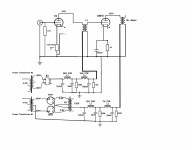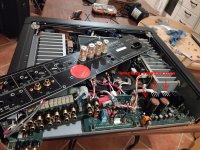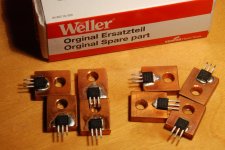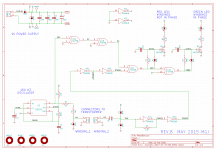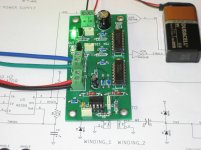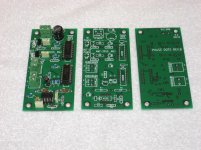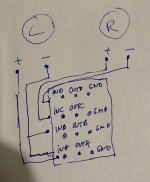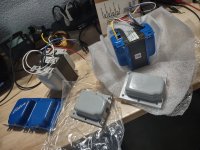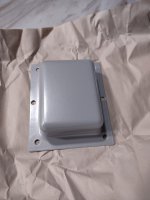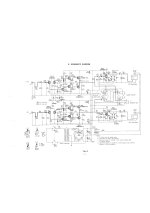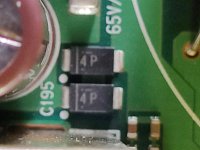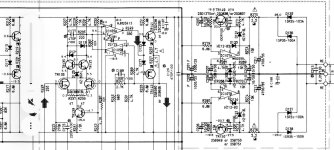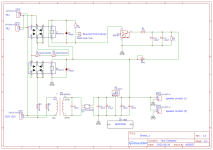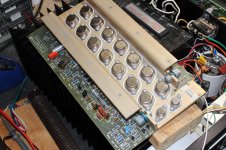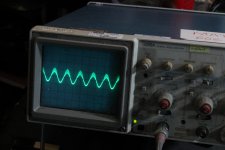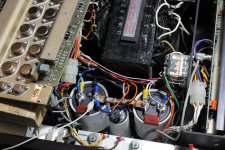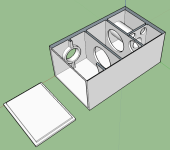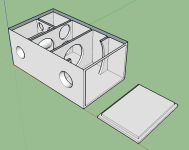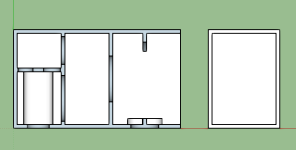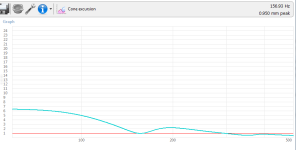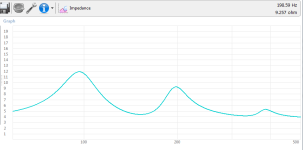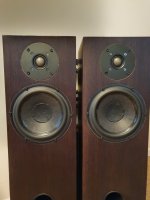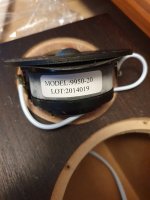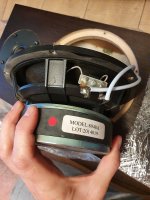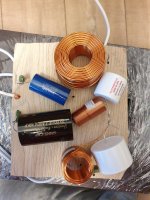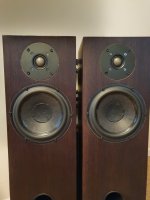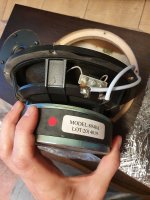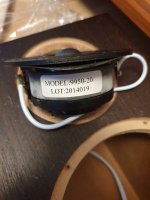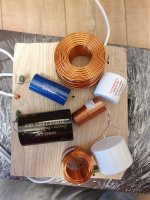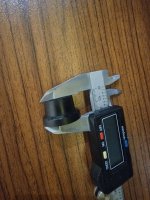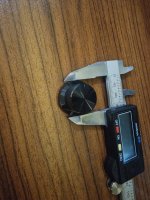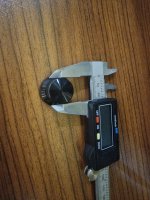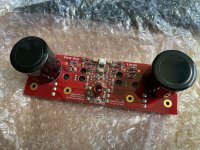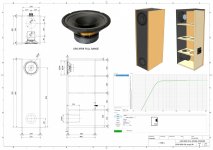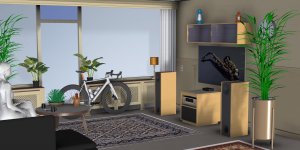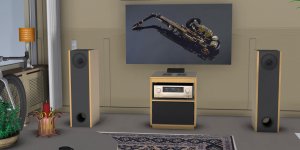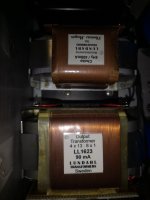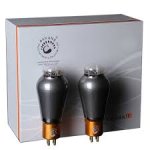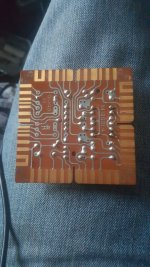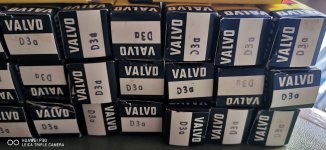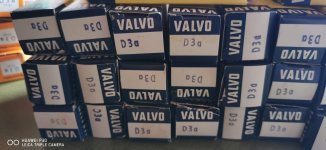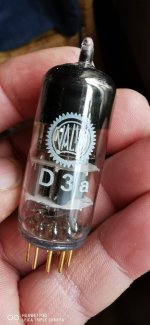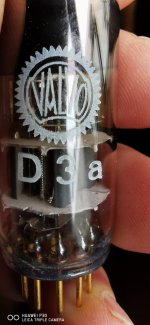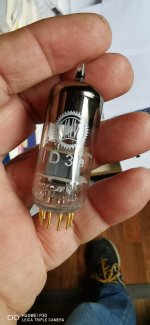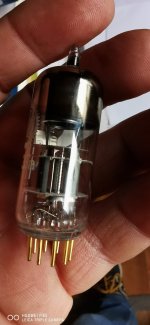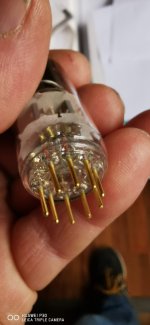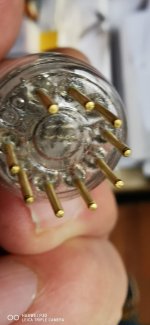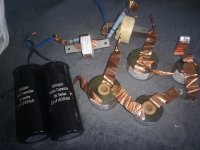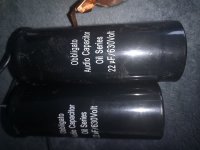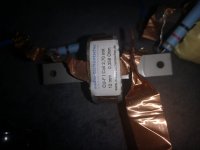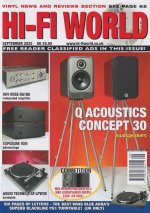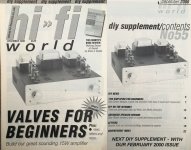2022 JUNE 09 -- SOLD OUT (YOU CAN STILL SEND THE GERBERS TO A PCB FAB AND BUY BOARDS YOURSELF)
2022 JUNE 09 -- SOLD OUT (YOU CAN STILL SEND THE GERBERS TO A PCB FAB AND BUY BOARDS YOURSELF)
Transformer schematics include "Phase Dots" that indicate which ends of the windings are in phase. Unfortunately, many transformers in used equipment are not marked with phase dots, and quite a few new transformers are not marked either.
If you have a signal generator and an oscilloscope, it's easy to determine the phase dots: see the first picture. If scope channel2 is "right side up" compared to channel1 then winding2 is in phase with winding1, and "?" becomes a dot. And vice versa. However, some DIYers don't have a signal generator and a scope, so this little tester board called "PhaseDots" might help.
It operates on the same principle, but instead of a scope and human eyeballs, the circuit uses a phase detector (XOR gate) to decide whether the windings are in phase or out of phase. This lights up either a Green LED (in phase) or a Red LED (out of phase). Simple and unambiguous. The circuit schematic is picture#2.
A 555 timer/oscillator drives a square wave into transformer winding#1. The resulting waveform on winding#2 is amplified in a series of CMOS logic inverters (gain > 5x per stage) and compared in XOR gate U1C. If they're in phase, D4 lights up. If not, D3 lights up. RC pulse shapers with slow risetime and fast falltime, drive the LEDs.
In practice the tester board is simple to use. Connect one of the transformer's primary windings to connector P2 (labeled WINDING_1) and leave it connected. Then, one by one, connect all the other windings to connector P3 (labeled WINDING_2) and observe their dots. Write these on a schematic as you go. After the last winding: Boom, you're done!
It is important that
the PhaseDots tester should always drive a transformer primary winding. (I.e.
always connect a primary winding to WINDING_1). Why? Because transformer primary windings have sufficiently high self-inductance to ensure a long (L/R) timeconstant. This prevents the winding from behaving as a differentiator, ruining the input waveform and lighting up the wrong LED (or both LEDs).
Picture 3 attached, shows the PhaseDots tester connected to an Antek AS-2222 toroidal transformer. Red and black are a primary winding, blue and green are a secondary winding. The illuminated green LED tells us that if red has a Phase Dot, then so does blue.
A few other pictures are attached, showing the PCB that I laid out. There's also a set of Gerber files that anyone can send to a PCB fab (I recommend
PCBshopper.com to help you choose a fab) and have their own boards made. The Gerber files are included in a zip archive, along with a Bill Of Materials and other ancillary stuff.
I built several PhaseDots boards for my own use, but I've got some leftover boards and leftover kits of parts which I am willing to let other DIY hobbyists have at my cost.
PCB only: {$6 ship to USA} {$9 ship to CAN+MEX} {$12 ship to rest of world}
PCB + kit of all parts: {$13 ship to USA} {$16 ship to CAN+MEX} {$22 ship to rest of world}
However, I will only accept cash or checks. Fortunately I will accept a check drawn on a non-USA-bank and denominated in non-USA-currency.
Sorry, I will not accept PayPal. I will not accept wire transfers. I will not accept Western Union. If you want to set up a little re-distributorship that does accept these, so you can forward boards and kits to other DIYers, please go right ahead with my blessings and good wishes.
Anybody who wants a board or a board + kit of all parts, send me a Private Message ("send me a PM") for purchasing information, mailing address, etc. I've got approximately twenty of them to get rid of.
Hope you enjoy the PhaseDots tester!
2022 JUNE 09 -- SOLD OUT (YOU CAN STILL SEND THE GERBERS TO A PCB FAB AND BUY BOARDS YOURSELF)
2022 JUNE 09 -- SOLD OUT (YOU CAN STILL SEND THE GERBERS TO A PCB FAB AND BUY BOARDS YOURSELF)
